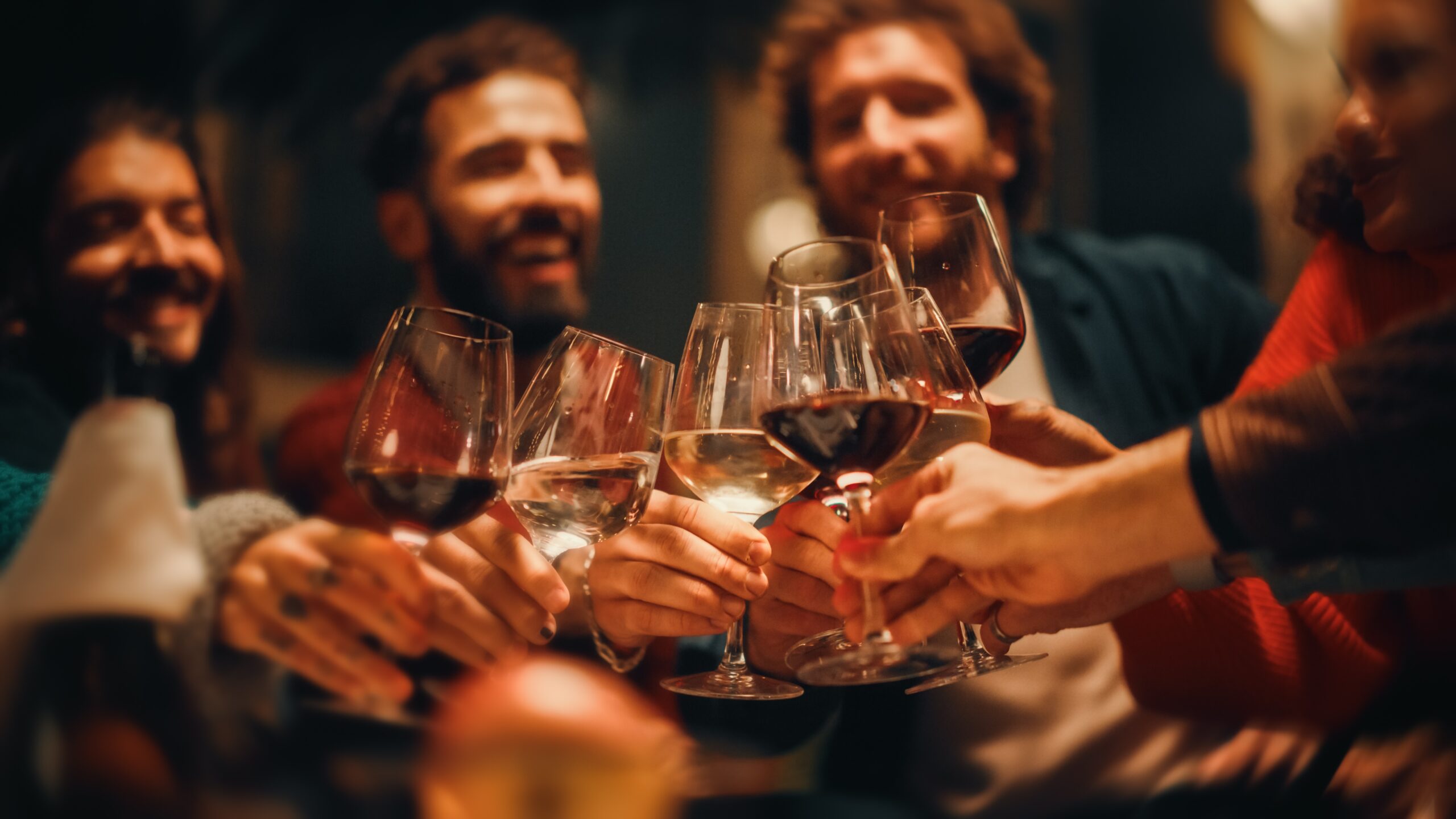As Millennials (1981-1996) and Generation Z (1997-2012) continue to explore wine and how it fits within their lifestyles, the wine industry needs to explore ways to keep these generations engaged. While industry events are strategized to showcase wines by their country, region, body or tasting notes, younger generations are more interested in the branding, story of the wines and environmental impact of their beverages, and the stories of the people that make them.
The 2021 Wine Market Council Benchmark Segmentation Survey¹ of 5,724 American consumers showed growing concern over Gen Z and younger Millennials. The survey determined that only 25% of 20-29 year old consumers drank wine. This group’s interests were floating towards other alcohol beverages, with 38% consuming beer and spirits. There are many factors that play a part in why a small fraction of younger generations consume wine versus Boomers with 34% of 60-69 year olds and 38% of 70+ enjoying wine. Despite these percentages, certain wine trends have stayed popular amongst all generations. This is inclusive of sparkling wines, RTD (ready-to-drink beverages), alcohol free and eco-friendly wines. Many of these beverages are branded as social or party drinks which bring in an aesthetic appeal to younger generations.
Popularity in beer and spirits has steadily increased with the industry’s consistency to stay on popular trends. Whether it is going viral with mixing Disaronno Velvet with Corona beer to create a fake Dr. Pepper, or Sapporo beer launching a seltzer product, these competing industries have creative ways to stay relevant for new generations. The beer and spirits industry has put themselves in a position to promote a single product through influencers, which have a large impact on younger generations. One of these is the Disaronno Velvet Summer Event Series, 3 influencer and media events to bring Disaronno velvet into the eyes of consumers. To spark interest in consumers, the wine industry may consider investing more in influencer marketing. Rob McMillan, the executive vice president of Silicon Valley Bank² reported that in 2021 roughly $122 million was spent by the wine industry on advertising, versus the two competing markets spirits and beer nearly spending triple ($533-$886 million). To bring wines into a brighter and more accepting light for Millennials and Generation Z, the wine industry needs to look at new ways to advertise the category.
Wineries that have devoted time to their image and aesthetic have been able to pivot within the industry, similarly to those in the beer and spirits world. Take Prosecco vs. Champagne for example. While Champagne is notoriously known as the “high end” sparkling wine, between December 2021 to December 2022 there was a 6%³ decrease in sales across the United States. Champagne brands have been known to rely on distributors and retailers to sell their wines rather than promoting through direct to consumer (DTC) ⁴ channels which in turn would restrict their relationship with customers. On the other hand, Prosecco kept their channels of communication open making their brands available to consumers by promoting products through numerous campaigns including National Prosecco Week. In 2022, Prosecco was promoted in over 1,000 retail stores and restaurants, alongside 1,100 online wine merchants. Through influencer partnerships National Prosecco week gained almost 800,000 followers organically⁵. Prosecco has not only made a name for itself in the wine industry but receives constant promotion to keep their image available to all generations whether that be through articles or social media. In turn, Prosecco had a market share increase of 26% from December 2021 to December 2022. Unlike Champagne, Prosecco went directly to customers by hosting 2 events in which over 200 consumers lived within the brand’s lifestyle. Not only having the ability to try several forms of Prosecco ranged at different price points to assist customers on a limited budget, but also being able to connect directly with other curious consumers.
To transition wine industry events to a new generation of drinkers, the industry will need to adapt to the demands of younger consumers. Some solutions include increasing the budget of branding to showcase the lifestyle their wines portray, whether this be a night on the town or a dinner party; adapting to cork to promote a greener wine and help aid the environment⁶; having influencer or consumer events to fully introduce the products rather than promoting them at large trade shows. These adjustments can be showcased at wine industry or smaller intimate events to help industry members select products that will better suit their consumer audiences, eventually, leading to an increase in popularity in wines amongst younger generations.
Sabrina Genovese is an event manager at Colangelo & Partners.
¹ Bratton, D., Smallin, A., & Gallagher, L. (2023, March 30). US wine market research and Insights. Wine Market Council. Retrieved April 25, 2023, from https://winemarketcouncil.com/
² Asimov, E. (2023, January 26). The American wine industry has an old people problem. New York Time. Retrieved April 25, 2023, from https://www.nytimes.com/2023/01/26/dining/drinks/american-wine-industry.html
³ Melnik, P. (2023, January 6). Why prosecco sales are booming. Santa Rosa Press Democrat. Retrieved April 26, 2023, from https://www.pressdemocrat.com/article/lifestyle/prosecco-sales-are-booming/
⁴ Lawrence, J. (2021, February 11). Champagne embraces direct to consumer sales. The Drinks Business. Retrieved April 26, 2023, from https://www.thedrinksbusiness.com/2021/02/champagne-embraces-direct-to-consumer-sales/
⁵ Prosecco doc consortium’s Fifth Annual ‘national prosecco week’ confirms the popularity of Prosecco Doc and prosecco doc rosé in the US market. Colangelo & Partners. (2023, January 4). Retrieved April 26, 2023, from https://www.colangelopr.com/clients-in-the-news/prosecco-doc-consortiums-fifth-annual-national-prosecco-week-confirms-the-popularity-of-prosecco-doc-and-prosecco-doc-rose-in-the-us-market/
⁶ Best for the environment – 100% cork: Produced by nature. preferred by winemakers. 100% Cork | Produced by Nature. Preferred by Winemakers. (2018, August 16). Retrieved April 25, 2023, from https://100percentcork.org/why-cork/best-for-the-environment/


